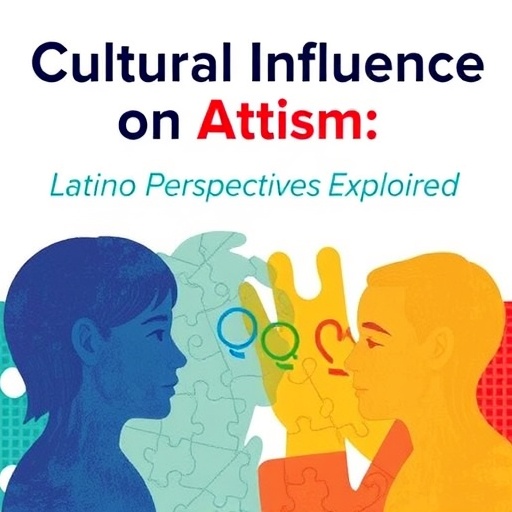
Chronic pain represents one of the most formidable challenges in contemporary medicine, affecting millions of individuals worldwide. The complexity of managing such pain is compounded by the controversial status of opioid prescriptions, which have brought both relief and harm to countless patients over the years. In light of this intricate landscape, a pivotal new study investigates the critical decision-making processes surrounding the continuation or discontinuation of long-term opioid therapy in adults suffering from chronic pain.
The study is deeply rooted in the experiences and insights of 28 expert clinicians, who provided their perspectives on the multifaceted harms and benefits associated with long-term opioid medication. Chronic pain, defined as persistent pain lasting three months or longer, has seen a rise in prevalence, particularly in the context of non-cancer diagnoses. The implications of this epidemic are profound, necessitating a nuanced approach to pain management that weighs the potential benefits of opioids against the very real risks of addiction, overdose, and exacerbation of pain conditions.
One of the standout findings from this study is the notable lack of consensus among medical professionals regarding the optimal management strategy for chronic non-cancer pain. More specifically, the analysis reveals that only 36% of the experts advocate for the continuation of opioid therapy, while an equal proportion urges for its cessation. This division speaks to the broader tension within the medical community, where the stakes can involve not only a patient’s quality of life but also their long-term health outcomes.
The study’s authors emphasize the dangerous potential associated with rapid tapering of opioids, including withdrawal symptoms and a potential resurgence of chronic pain, or even the onset of mental health crises. Indeed, more than half of the surveyed experts voiced concerns regarding the dangers of abruptly stopping opioid therapy. This sentiment is integral in shaping protocols for pain management, indicating a cautious and calculated approach may be more beneficial than immediate cessation.
In pursuit of alternatives, some clinicians are advocating for transitioning patients to buprenorphine. This medication is notable for its dual action: it alleviates pain while simultaneously reducing the reinforcing effects associated with opioid dependence. By doing this, clinicians hope to mitigate withdrawal symptoms and cravings, ultimately facilitating a safer and more effective treatment regimen for those grappling with chronic pain.
The study also explored the potential benefits of integrating non-opioid therapies into the treatment spectrum, despite some experts being skeptical about their efficacy based on past experiences with these therapies. Emphasis was placed on the importance of shared decision-making between patients and providers, empowering patients to take an active role in their treatment. However, the lack of consensus on the execution of such measures underlines the necessity of establishing clearer guidelines rooted in evidence-based practices.
While most experts acknowledged the adverse effects of co-occurring conditions such as alcohol use and mental health disorders on patient safety, there was considerable variability in opinions regarding the assessment of opioid use disorder and overdose risk. This oversight may reflect a broader systemic issue in pain management, where many providers may prioritize pain relief over comprehensive assessments of potential addiction and risks.
The moral complexities of opioid prescription practices further complicate the issue of managing chronic pain. Kurt Kroenke, M.D., a co-author of the study, highlights that while the beneficial role of opioids in patient pain relief is well-established, the potential for abuse and adverse outcomes necessitates a careful evaluation of each patient’s specific circumstances. Moreover, taking a patient off opioids could lead to significant consequences, including not just the worsening of chronic pain but also the potential for drug-seeking behavior and increased risk of overdose.
Additionally, it’s important to consider the psychological aspects tied to chronic pain management. Patients may develop a dependency on opioids not just for pain relief but as a coping mechanism for underlying mental health issues. Therefore, when contemplating discontinuation of opioids, a multifaceted treatment approach that addresses both physical and psychological factors may be imperative to uphold patient well-being.
While opioid therapy remains a highly debated subject, Kroenke asserts that patients who still grapple with chronic pain despite being on prescribed opioids should be considered candidates for tapering and alternative therapies. This perspective emphasizes not only patient safety but also encourages movement towards treatment strategies that are less reliant on opioids, thereby reducing the potential for long-term dependence.
As the study draws to a close, it highlights the significant implications of professional liability fears, regulatory changes, and health system initiatives that make it challenging to establish clear guidelines on tapering or continuing opioid prescriptions. In this transitional period, the importance of ethical medical care remains critical, advocating for informed consent and dialogue based on mutual respect between healthcare providers and their patients.
In conclusion, the study underscores a critical gap in clinical practice guidelines regarding the management of patients who face risks from both continuing and discontinuing their long-term opioid therapy. Given the continuing evolution of pain management, there is an urgent need for ongoing discourse and research to ensure that clinicians and patients can navigate the complex terrain of chronic pain treatment effectively.
Subject of Research: Management of long-term opioid therapy in chronic pain patients
Article Title: Management of patients at risk of harms from both continuing and discontinuing their long-term opioid therapy: A qualitative study to inform the gap in clinical practice guidelines
News Publication Date: 25-Jan-2025
Web References: PubMed Study
References: Pain Practice
Image Credits: Not applicable
Keywords: Chronic Pain, Opioids, Pain Management, Buprenorphine, Tapering, Patient Safety, Addiction, Mental Health, Non-opioid Therapies, Shared Decision-Making, Healthcare Guidelines.
Tags: addiction and chronic painchronic pain management strategiesdecision-making in pain managementdiscontinuation of opioid prescriptionsexpert clinician insights on opioidshealthcare professionals’ perspectiveslong-term opioid therapymanaging non-cancer painopioid epidemic implicationsopioid prescription debatespain relief and opioid risksrisks and benefits of opioids





